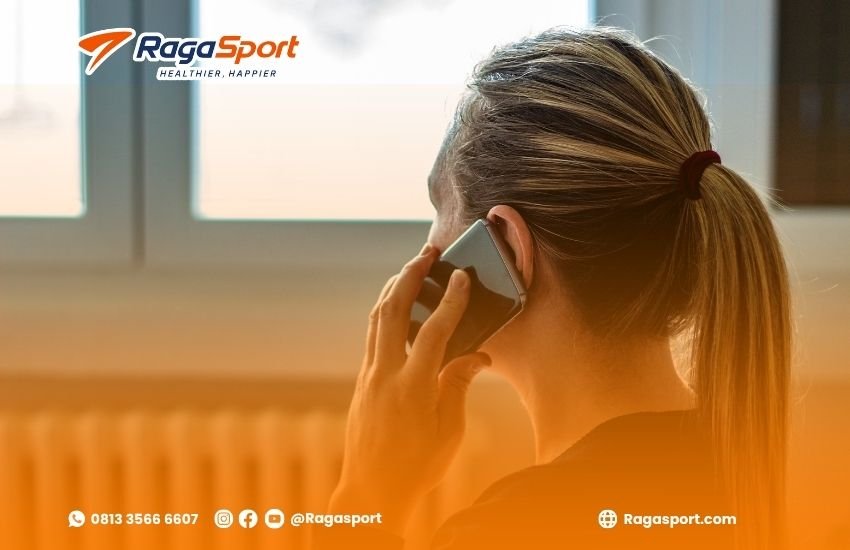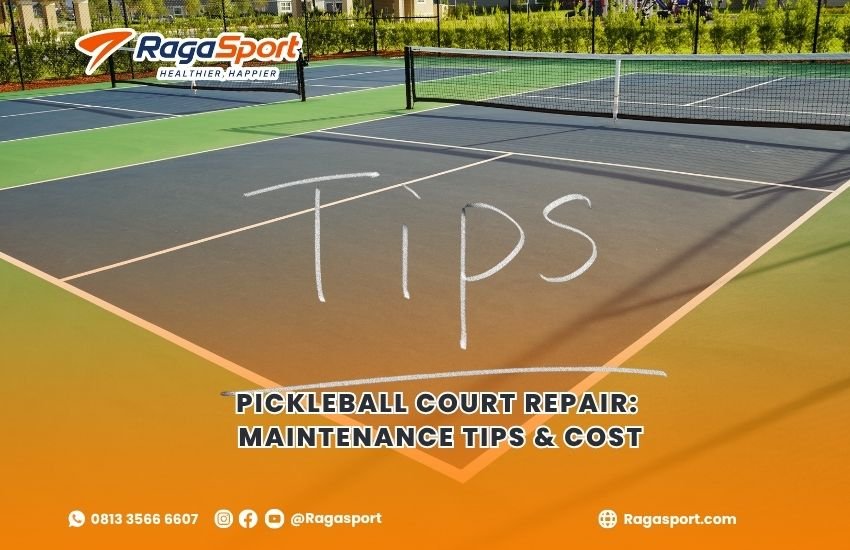Pickleball Court Repair: Maintenance Tips & Cost
Why Pickleball Courts Don’t Last Forever
Pickleball is growing fast across the world, including in Indonesia but even the most professional-grade courts face damage over time. Sun exposure, foot traffic, standing water, and poor drainage systems contribute to surface wear, discoloration, and cracks. Left untreated, these problems can reduce gameplay quality and cause injuries.
Timely repairs and regular maintenance are key to preventing major expenses. A well-maintained court stays safer, looks better, and lasts much longer. Explore proven strategies to repair and maintain your pickleball court. Learn about common damage, expert tips, and repair costs to keep your court safe, vibrant, and game-ready.
Table of Contents
1. Essential Maintenance Tips to Prevent Damage
Taking preventive steps can significantly reduce the need for major repairs. Here are basic but effective practices to maintain your pickleball court throughout the year.
1.1 Weekly Surface Cleaning
Use a soft broom or leaf blower to remove dust, sand, and organic debris. This prevents dirt from embedding into the court surface or creating slippery conditions.
1.2 Monthly Surface Washing
Wash the surface using mild soap and clean water. Avoid high-pressure cleaners, which can peel off the acrylic coating. Gentle scrubbing helps prevent mold and algae growth in tropical climates.
1.3 Equipment Checks
Inspect net tension, pole stability, and signs of rust. Replace any frayed netting and repaint rusting poles to maintain a professional appearance and safe play conditions.
1.4 Monitor Drainage
Water should drain off the court within 30 minutes. If puddles form or take too long to evaporate, check surrounding drains and slope levels to ensure proper runoff.
2. Common Court Damages and Repair Solutions
Even with great maintenance, courts can develop issues over time. Here are the most common problems and how to fix them.
2.1 Crack Formation
Hairline cracks can be filled with acrylic crack filler, but wider cracks may require cutting and patching with elastomeric compounds. Regular inspections help catch these early.
2.2 Faded Lines and Color Loss
UV exposure and frequent play wear down the court’s paint and texture. Repainting with acrylic sport coatings brings back vibrancy and visibility.
2.3 Slippery or Worn-Out Surface
Lost texture affects traction. A resurfacing process involves cleaning, repairing cracks, applying new color coats, and restoring the anti-slip finish.
2.4 Net and Hardware Issues
Loose poles or sagging nets can compromise match quality. Re-tighten, replace, or reinforce hardware as needed.
3. Breakdown of Pickleball Court Repair Costs
Repair costs depend on the type of damage, surface area, material quality, and labor. Below is a rough estimate based on projects across Indonesia:
| Repair Type | Estimated Cost (IDR) |
|---|---|
| Crack Filling (per meter) | Rp150,000 – Rp300,000 |
| Surface Resurfacing (per court) | Rp15,000,000 – Rp30,000,000 |
| Line Repainting | Rp2,000,000 – Rp4,000,000 |
| Net System Replacement | Rp1,500,000 – Rp3,000,000 |
| Drainage System Fixes | Rp5,000,000 – Rp10,000,000 |
While DIY kits are available for minor cracks, professional resurfacing is highly recommended for durability and safety.
4. When to Call a Professional Contractor

It’s tempting to fix issues yourself, but not all problems can be solved with patchwork. Professional court repair contractors are equipped with the tools, materials, and expertise to handle:
- Full court resurfacing
- Advanced crack sealing
- Drainage correction
- Paint and layout precision based on official standards
You should hire a professional if:
- Cracks are spreading quickly
- The court feels uneven or soft
- Water remains on the surface after rain
- Surface texture has worn away
- You plan to host tournaments or community events
5. Choosing the Right Contractor for Pickleball Court Repair
The quality of your repair depends heavily on the contractor you hire. Make sure to evaluate potential service providers using the criteria below:
5.1 Relevant Experience
Look for contractors who specialize in sports surfaces, not just general paving. Ask to see their portfolio of pickleball or multi-sport court repairs.
5.2 Material Quality
Ensure they use high-grade acrylic coatings, UV-resistant paint, and weatherproof crack fillers suitable for Indonesia’s climate.
5.3 Transparent Pricing
Request a written quote with clear line items for materials, labor, and optional upgrades. Be cautious of unusually low prices—they often signal low-quality materials or rushed work.
5.4 Warranty & Support
A good contractor provides post-repair support and warranties on resurfacing or major structural work.
6. Tips to Prolong Your Court’s Lifespan After Repair
Once your court is repaired or resurfaced, you can protect your investment with the following habits:
- Allow 48–72 hours for the new surface to cure before play
- Prohibit bikes, chairs, or heavy equipment on the court
- Continue weekly cleaning and visual checks
- Repaint lines annually for clarity and appearance
- Hire professionals for yearly inspections and minor touch-ups
With consistent care, a resurfaced pickleball court can stay in excellent condition for 8 to 10 years.

Ready to Repair or Maintain Your Pickleball Court?
Let Raga Sport turn your vision into reality with expert construction, top-quality materials, and a field that meets every standard.
👉 Explore our projects at ragasport.com
📲 Chat with our team now via WhatsApp: Click Here

